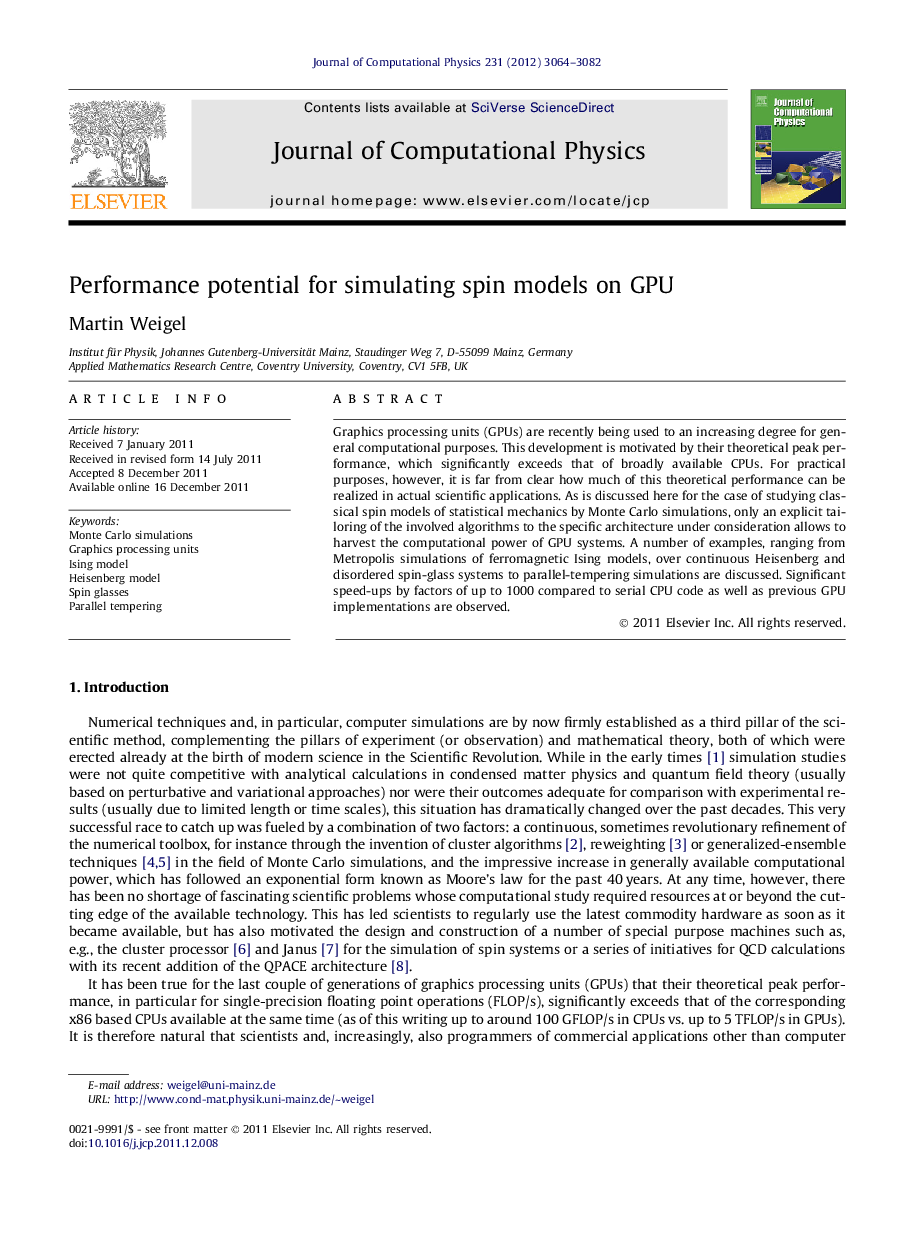| Article ID | Journal | Published Year | Pages | File Type |
|---|---|---|---|---|
| 519043 | Journal of Computational Physics | 2012 | 19 Pages |
Graphics processing units (GPUs) are recently being used to an increasing degree for general computational purposes. This development is motivated by their theoretical peak performance, which significantly exceeds that of broadly available CPUs. For practical purposes, however, it is far from clear how much of this theoretical performance can be realized in actual scientific applications. As is discussed here for the case of studying classical spin models of statistical mechanics by Monte Carlo simulations, only an explicit tailoring of the involved algorithms to the specific architecture under consideration allows to harvest the computational power of GPU systems. A number of examples, ranging from Metropolis simulations of ferromagnetic Ising models, over continuous Heisenberg and disordered spin-glass systems to parallel-tempering simulations are discussed. Significant speed-ups by factors of up to 1000 compared to serial CPU code as well as previous GPU implementations are observed.
